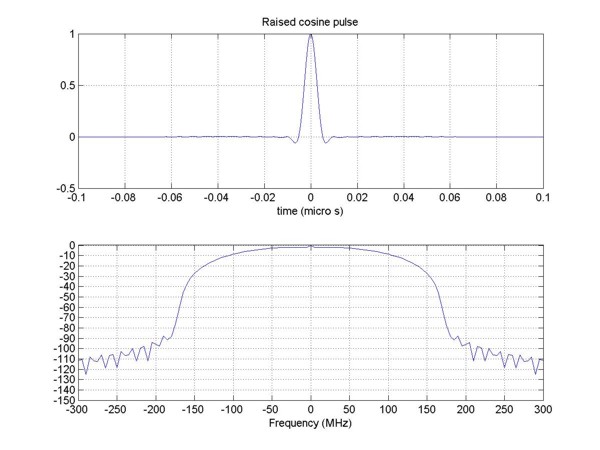
Final project: The Martian Network
Earth <-> Mars Satellite Link Design
Earth->Satellite
The distance between Earth and Mars varies with time and ranges from 55.7 million kilometers to 401.3 million kilometers. As the link has to be maintained at all times, it has to be designed such that it will deliver the desired capacity in worst case. That is when the distance between the plantes is the greatest.
Out of the available frequency bands (see problem statement), we pick the 34.2-34.7 GHz band for the Earth->Mars satellite link and 31.8-32.3 GHz band for Mars satellite->Earth. Their bandwidth is 500 MHz, which will be enough for the required bitrate of Mbits/sec and 50 users. A slightly lower frequency band was chosen for the Mars satellite->Earth link, since the path losses will be lower there and the transmit power on the satellite is limited.
Code Division Multiple Access (CDMA) with the spreading factor of 128 and Gold codes will be employed to enable 50 users to share the same frequency band. Due to such large distances and resulting path losses, turbo coding with rate 1/2 will be used to provide the target bit error rate at low signal-to-noise ratios. The figure below shows the block diagram of the receiver on the satellite.

The block diagram of the satellite receiver
The signal with a carrier frequency of 34.25 GHz is transmitted using DSN antennas with the transmit power of 500000 Watts and 81.5052 dBi gain. QPSK modulation is employed. As the each of the 50 possible signals with the bit-rate of 1.5 Mbits/s is spread with a factor of 128, the symbol rate results to 192 Mbit/s. Due to the enormous transmit power it has be made sure that the signal is sufficiently suppressed at out-of-band frequencies, so it will not interfere strongly with adjacent frequency bands. With this in mind, a raised cosine pulse with a roll-off factor of 0.8 is proposed. Moreover, we want the power of the signal at out-of-band frequencies to be at least 100 dB below the peak value, therefore we require the pulse to have a length of 24 symbol periods. The plot of the proposed pulse is shown in the figure below.

The satellites receiver uses a dish antenna pointed at Earth with a diameter of 4 meters and an efficiency 0.9, so that its gain is 62.728 dBi at 34.45 GHz. A low-noise amplifier operating at the temperature of 70 K and with a 32 dBi gain is employed. To limit the amount of noise entering into the receiver, a band-pass filter with a width of 350 MHz and a center frequency of 34.45 GHz is used. At the maximum distance of 401.3 million kilometer, the carrier to noise (C/N) ratio after despreading at the receiver results to 4.1699 dB (see how C/N was calculated).
With the use of turbo codes at rate 0.5, a Eb/No ratio of 0.7 dB is needed to achieve the target bit error rate of 10-6 . In the previous notation Eb means the average energy per information bit and No is the one-sided spectral power density of the noise. Since Eb = Es (Es - average energy per symbol, 2 coded bits/symbol), the required Es/No = C/N is 0.5 dB, which our system fulfills.
Satellite->Earth
To transmit the signal from terminals on Mars back to Earth, the satellite uses the same antenna as for receiving (described above) and the signal is transmitted in the 31.8-32.3 GHz band with the central frequency of 32.05 GHz. At that frequency the gain of the antenna is 62.1008 dBi. The available transmit power on the satellite is 100 Watts.
The block diagram of the satellite transmitter is shown on the figure below

The block diagram of the satellite transmiter
On the other hand, the gain of the DSN antenna is 80.8780 dBi at the given frequency and the system temperature is rated to be 20 K. Similarly as in the Earth->Satellite link, there are a maximum of 50 signals transmitted at the same time, and thus a maximum of 49 signals interfer with each transmitted signal.
The expected C/N ratio after despreading in the DSN receiver on Earth is 4.0459 dB (see how C/N was calculated), which again is well above the threshold for the target bit error-rate.